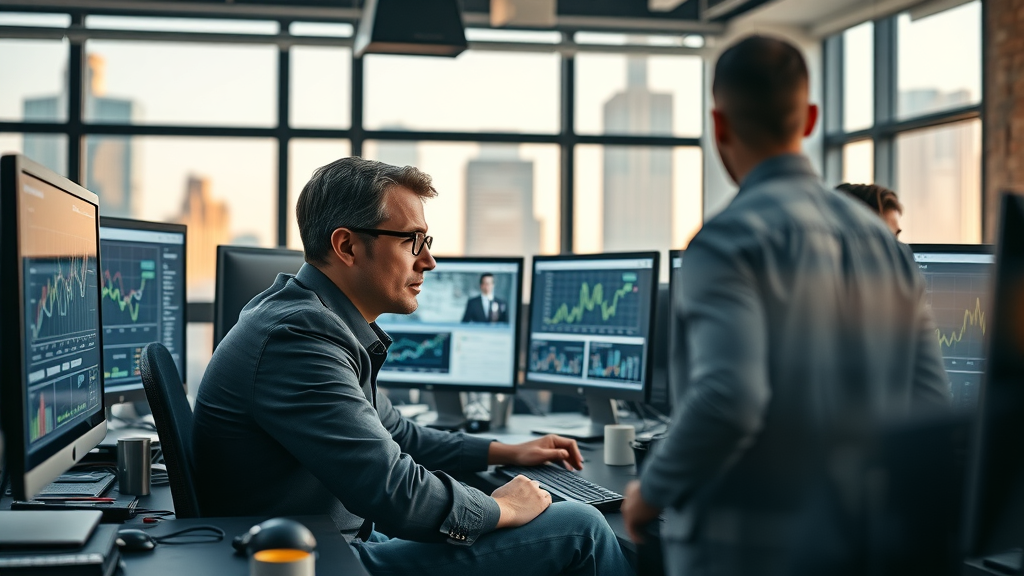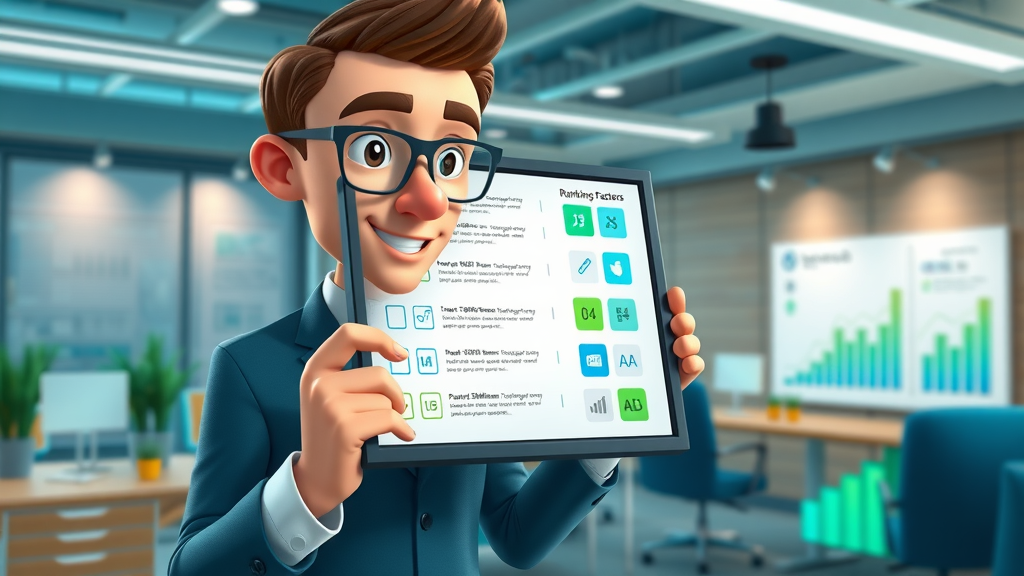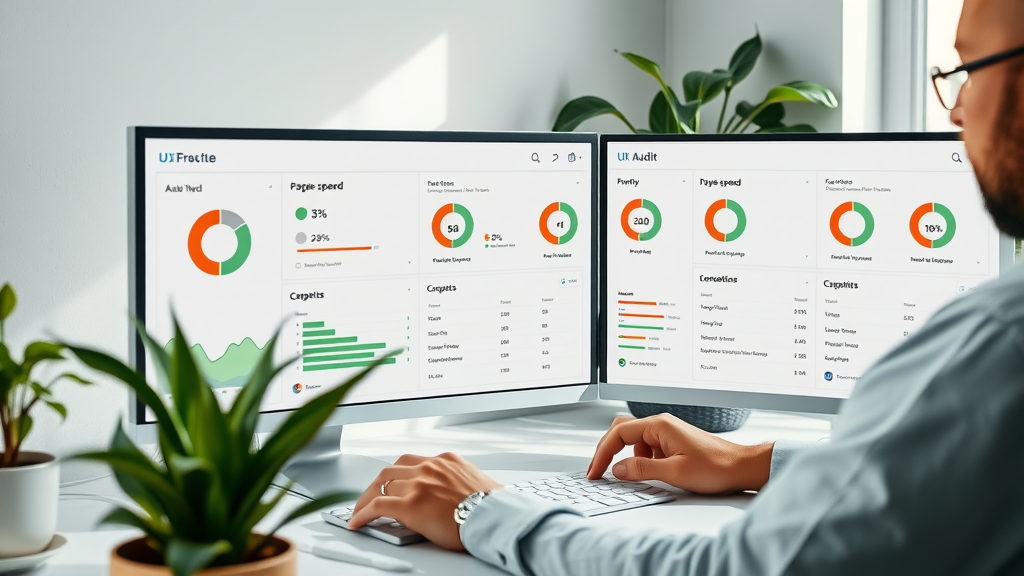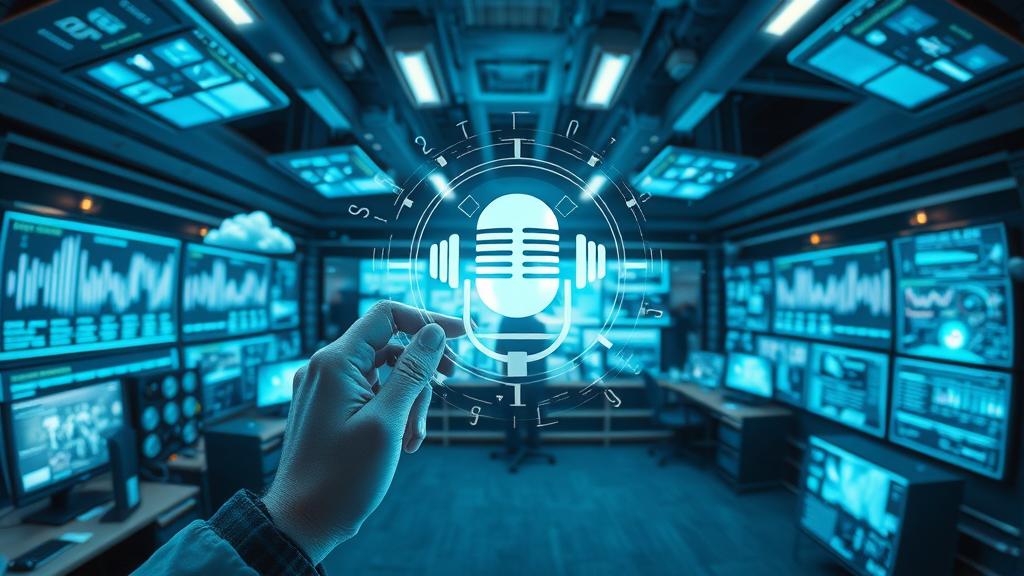Did you know that 91% of all web pages receive zero organic traffic from Google ? In today’s digital age, media site ranking factors make or break your visibility—and ultimately, your business. This guide dives deep into the surprising statistics and unconventional strategies shaping SEO ranking for media companies now. Whether you’re a veteran publisher or managing a newsroom on the rise, understanding these secrets could be the difference between dominating Google search results and disappearing from the internet entirely.
Why Media Site Ranking Factors Matter: Shocking Stats and Unconventional Insights

Did you know that 91% of all web pages receive zero organic traffic from Google? Understanding the right media site ranking factors is no longer optional—it's essential for online survival.
- The core media site ranking factors for today’s competitive landscape
- How SEO ranking, user experience, and search intent drive top results
- Why content quality and Core Web Vitals are critical
- Practical steps to elevate your media site’s search engine performance
The competition for digital attention is fierce. Recent research shows that billions of new web pages go live each month, yet a staggering majority remain invisible on the most-coveted search engine results pages (SERPs). Media publishers seeking greater exposure must make media site ranking factors their top priority. Adapting rapidly is the only way to ensure your stories surface atop Google search for timely, lasting audience impact.
In 2024, the ranking factors for media sites have moved far beyond mere keyword stuffing. They now encompass seamless user experience , powerful content quality , lightning-fast load times, mobile optimization, and next-generation technologies like voice search and structured data. Ignoring any of these could sideline even your best journalism, making it vital to keep up with evolving SEO trends.
Defining Media Site Ranking Factors and Their Direct Impact on SEO Rank
What Are Media Site Ranking Factors? (Including Google Ranking and SEO Rank)

Media site ranking factors represent the signals and attributes search engines use to evaluate and position your website in search engine results . These include everything from the structure of your web pages to the quality of your links, as well as user behavior and site technical health. For a news platform, getting these right isn’t an option—it’s mission-critical. Google's complex algorithm examines dozens of ranking factors such as relevance, core web vitals , and authority, directly impacting your SEO rank .
Search engines constantly refine their formulas for ranking news stories and features. Publishers need to focus on primary areas such as on-page SEO (including meta tags, keywords, and internal linking), technical excellence (like page speed and mobile-friendliness), and off-page authority (primarily quality backlinks and brand mentions). Each element contributes to the holistic assessment that determines where your articles land on the search engine results page.
It’s also crucial to recognize that while Google is the dominant player, every search engine uses nuanced combinations of ranking signals. Investing in a robust understanding of both established and emerging factors translates into more visibility, greater reader engagement, and higher revenue opportunities for your media brand.
SEO Ranking Factors vs. Traditional Ranking Factors: What Media Sites Need to Know
Traditional ranking factors like authoritativeness, topical relevance, and basic inbound links have always mattered. But today, SEO ranking factors are more sophisticated. Google’s algorithms now weigh hundreds of indicators such as core web vitals , structured data, and seamless user experience . This evolution means that sites focusing only on volume or superficial optimization risk being outranked by more technically-advanced and user-focused competitors.
For media companies, the difference is critical—traditional tactics alone are no longer enough. It’s vital to merge time-honored practices with modern SEO strategies: optimizing technical infrastructure, aligning content with search intent , and building a recognized, trustworthy brand. In practical terms, that means meticulously crafting every section of your website—from headlines and metadata, to responsive design and lightning-fast page speed .
Understanding the interplay between “old school” and new ranking factors gives media sites a powerful competitive advantage. When integrated thoughtfully, these strategies propel your content to the top of search engine results pages , surpassing rivals who lean solely on legacy approaches.
| Ranking Factor | Type | Influence on Search Results |
|---|---|---|
| Optimized Meta Tags | On-Page | Improves relevancy for target search queries; boosts click-through rates |
| Content Quality & Structure | On-Page | Drives engagement and increases dwell time, sending positive signals to search engines |
| Core Web Vitals/Page Speed | Technical | Improves user experience, reduces bounce, parameter for Google ranking |
| Authority Backlinks | Off-Page | Boosts domain authority and Google’s trust in site content |
| Mobile Optimization | Technical/On-Page | Ensures performance & accessibility across devices, a 2024 must-have ranking factor |
Critical SEO Ranking Factors Transforming Media Site Strategy
Search Engine Algorithms: How Google Ranking Factors Reshape Visibility

Today’s Google ranking factors are in a constant state of flux, adjusting to the ever-changing information landscape. With every core update, Google rebalances how sites are scored for search engine results . This means elements such as page speed , site security, structured data, and mobile responsiveness have a more direct impact on SEO success than ever before.
Search engines increasingly rely on machine learning and AI to interpret users’ actual needs. As a result, algorithmic factors like search intent and page relevance are now at the center of how rankings are determined. Media sites must now adopt advanced technical practices like schema markup, improved site architecture, and continuous data monitoring to future-proof their visibility. Failing to adapt can mean dramatic traffic drops—even overnight.
In 2024, Google's commitment to surfacing “the most helpful results possible” means that media publishers must pay attention not just to their content, but to how it’s delivered, consumed, and engaged with. Staying on top of SEO ranking factors is now a multifaceted task requiring agility and regular review.
Search Intent and User Experience: The Modern Ranking Factor Duo
Search intent and user experience have emerged as a dynamic duo among modern media site ranking factors. Google’s AI-driven algorithms strive to connect users with the most relevant answers—fast. This makes it critical for your news stories and content pages to be tightly aligned with what real people are searching for, and how they expect content to appear and function.
A focus on user experience involves optimizing page layout, ensuring easy navigation, reducing intrusive ads, and facilitating mobile access. Good internal linking offers additional value and keeps visitors engaged across multiple pages, which is a positive ranking signal to search engines. Media companies that map content closely to user questions and needs consistently outperform less agile competitors in SEO ranking .
Mastering search intent is about going beyond keywords—it's about delivering the right format, depth, and supplementary media at exactly the right moment. Smart use of video, visuals, and FAQs can be the difference-maker, pushing your content up the search engine results page pile.
Content Quality and the Power of Quality Content in SEO Ranking
Consistently delivering quality content is a cornerstone of every successful media site. Google’s algorithms now evaluate not just the presence of keywords, but the depth, accuracy, and trustworthiness of your articles. Features such as original reporting, expert quotes, diverse perspectives, and comprehensive analysis all boost your SEO ranking .
In a world awash with information, publishing thorough, authoritative, and engaging content meets both user and algorithmic requirements. Well-structured layouts, broken into logical subheadings and lists, keep audiences engaged and reduce bounce—a key metric for Google ranking . Additionally, strengthening your claims with up-to-date research, infographics, and case studies increases shareability and potential for authority backlinks .
"Great content is the best sales tool in the world." — Marcus Sheridan, Marketing Strategist
Ultimately, the power of quality content goes beyond initial visibility—it builds lasting loyalty, fuels return visits, and generates more interaction across your entire media site ecosystem.
Core Web Vitals: Media Site Performance as a Google Ranking Factor
Technical SEO Ranking Factors: Core Web Vitals and Page Speed Optimize Google Ranking

In 2024, core web vitals —Google’s set of user-centered performance metrics—are essential technical ranking factors for every media site. These measure how quickly content loads, how interactive pages are, and how visually stable they remain during navigation. Key metrics include Largest Contentful Paint (LCP), First Input Delay (FID), and Cumulative Layout Shift (CLS), all of which directly influence your Google ranking .
Maintaining fast page speed is especially vital for publishers coping with high-traffic spikes, heavy content, and multimedia. Sites that delay or stutter risk losing not only impatient users but also the top slots of the search engine results page . Investing in smarter caching, quick-loading images, and optimized code can yield an immediate boost in both user satisfaction and SEO rank .
As media companies scale operations and increase editorial volume, ongoing technical health checks using tools like Google Lighthouse or PageSpeed Insights become non-negotiable. Each improvement compounds, creating a tangible competitive edge in today’s crowded online ecosystem.
Mobile Optimization and Web Vitals: Media Site Ranking Factors in 2024

With a majority of traffic now arriving via smartphones, mobile optimization is a top-tier ranking factor for all media brands. Google’s latest core updates reflect a “mobile-first” approach, ranking mobile-optimized sites higher than their desktop-only peers. Responsive design ensures that layouts, text, images, and navigation gracefully adapt to any device or orientation.
Web vitals also measure mobile performance specifically, penalizing sites that lag or fail to deliver quick, stable interactions on smaller screens. Optimizing for mobile means streamlining navigation, minimizing pop-ups, and displaying news content with adaptive font sizes and touch-friendly menus. The resulting boost in both user experience and SEO ranking factors is immediate and measurable.
Investing in accelerated mobile pages (AMP), compressing multimedia, and conducting regular mobile audits further ensures that your site lives up to user expectations—and Google’s standards for premier search results .
On-Page Ranking Factors for Media Sites
Meta Tags, Headings, and Keyword Placement: Boosting SEO Rank for Media Content

On-page optimization is where every media site can wield substantial control over SEO ranking . Well-crafted meta titles and descriptions directly impact whether searchers choose your results on the engine results page. Including the main media site ranking factors keyword in headlines and first paragraphs aligns content with Google’s relevance signals.
Effective use of headings (H1, H2, H3) with natural keyword variations not only clarifies article structure but also keeps search engines attentive to your topical authority. Every article should be built around a clear focus, using semantic and NLP keywords to provide depth and context. Proper image alt tags allow both users and crawlers to understand media, helping further boost your position in search results .
Regularly reviewing and refining your core metadata and on-page structure maximizes your media site’s opportunity for higher SEO rank . Minor edits—such as clarifying a description or repositioning a target phrase—can often mean the difference between obscurity and first-page status.
Internal Linking and User Experience: Search Engine Optimization Tactics
Smart internal linking is more than just site navigation; it’s a powerful SEO ranking factor that supports both user experience and authority consolidation. By guiding readers to related stories or category pages, you extend their session duration, which sends positive engagement metrics back to Google and other search engines.
Well-planned internal links reinforce the semantic structure of your website and help crawl bots discover deeper content. This indexing, in turn, amplifies a site’s thematic focus and can boost SEO ranking for competitive news clusters, special sections, or ongoing coverage. For publishers, linking old exclusives or evergreen explainers within new reporting keeps both traffic and content “fresh” in the eyes of search engines.
In summary, optimizing your internal link architecture—ensuring logical, user-driven connections throughout your site—remains an actionable, ongoing tactic in the media SEO playbook.
Lists of Key On-Page Ranking Factors to Implement Today
- Optimized titles and meta descriptions
- Keyword-rich headers
- Appropriate image alt tags
- Fast-loading images and assets
- Mobile-responsive design
By incorporating these key on-page elements, media sites not only enhance their standing with search engines but also improve the overall reader journey, increasing trust and repeat visits. Each factor works individually but also compounds, multiplying your results when applied together as part of a holistic SEO strategy.
Regular content audits, site speed reviews, and structured data integration further cement your site’s “authority signals”—signaling to Google you deserve a top spot in 2024 and beyond.
Off-Page SEO Ranking Factors Impacting Media Site Trust
Authority Backlinks and Brand Mentions: Strengthening Google Ranking

Off-page SEO ranking factors are the power source behind a site’s digital reputation. Top among them are authority backlinks and high-quality brand mentions from reputable sources. When distinguished news outlets or industry leaders link to your stories, Google interprets it as an endorsement of your expertise, raising your SEO rank and trustworthiness.
Strategic media partnerships, guest contributions, and targeted PR campaigns all generate valuable backlinks. It’s not just about quantity—links from spammy or irrelevant sites can actually hurt. Focus instead on cultivating connections from authoritative sites in your niche, national newsrooms, universities, or major blogs. The more natural and contextually placed these links are within quality content, the more potent their influence on your google search results .
Monitoring your site’s backlink profile through tools like Ahrefs or SEMrush keeps you informed and ready to disavow low-value links. Consistent, high-value mention building is an ongoing process, but one that pays dividends through higher search results placement and ongoing brand recognition.
Social Signals and Their Influence on Ranking Factors
Social engagement is often debated as a ranking factor , but recent studies indicate that popular content on platforms like Twitter, Facebook, and LinkedIn can prompt more inbound links, user visits, and brand searches. These “social signals”—when combined with robust off-page SEO—serve as evidence of your site’s real-world relevance to both audiences and search engines .
For media companies, consistently posting share-worthy content fuels conversation and amplifies visibility. Harnessing user-generated content, real-time news coverage, and interactive polls encourages deeper engagement. The resulting growth in branded searches and organic referral traffic demonstrates strong user trust, further strengthening your media site ranking factors profile.
Embedding social links into articles, inviting community discussion, and featuring prominent social proof elements on your site make this tactic part of your “off-page ranking factor” arsenal for 2024.
| Source | Type | SEO Ranking Factor Improvement |
|---|---|---|
| Major News Networks | Editorial Link | Significant increase in search engine trust and domain authority |
| Industry Associations | Resource Citation | Boosts topic specificity and authority for focused keywords |
| Academic Journals / Universities | Research Reference | Enhances credibility, supports higher SERP rankings |
| Leading Bloggers/Influencers | Guest Post/Review | Broadens reach, attracts natural shares and additional backlinks |
Emerging Media Site Ranking Factors for 2024 and Beyond

Structured Data, Voice Search, and AI: Shaping New Google Ranking Factors
The next wave of SEO ranking factors is being shaped by advances in structured data, voice search, and artificial intelligence. Implementing schema markup allows search engines to better understand and display your content through “rich results”—featured snippets, top stories carousels, and instant answers. This technical underpinning is especially important for media sites aiming to secure prominent placements in google search results .
Voice search is altering how people query; natural language, question-based optimization, and long-tail keywords are now vital. AI systems, such as Google’s Search Generative Experience, favor highly relevant, contextually-rich stories. Staying ahead means adopting tools and practices that cater to these technologies, positioning your media brand at the cutting edge as user habits shift rapidly.
Proactive integration of the latest schema, voice search capabilities, and AI-driven personalization strategies will be the differentiator between top performers and those left behind as ranking factors evolve.
Future-Proofing Your Media Site with Evolving SEO Ranking Factors
Thriving amid shifting SEO ranking factors requires an agile mindset and ongoing commitment to learning. Monitor Google’s algorithm updates, participate in SEO roundtables, and regularly review your analytics to spot trends. Investing early in digital accessibility, video SEO, and next-gen storytelling formats keeps your platform flexible and resilient.
Encourage your team to test and adopt emerging best practices, such as conversational search optimization or integration with news aggregator platforms. This proactive stance future-proofs your site, empowering your newsroom to ride the next surge of innovation rather than struggling to catch up.
"The only constant in SEO is change. Adapting to new ranking factors is the key to sustained media site success." — Industry Expert
Above all, media sites must view ongoing SEO adaptation as a core part of audience development—investing in it is investing in your brand’s long-term dominance in the digital news space.
Case Studies: Media Sites Leveraging Key Ranking Factors for High SEO Rank
Example 1: How a Media Site Improved Google Ranking with Enhanced Core Web Vitals

Consider a leading digital news site that undertook a comprehensive Core Web Vitals upgrade in early 2023. By compressing images, adopting lazy loading, and refining their mobile experience, they reduced Largest Contentful Paint from 3.8 seconds to 1.2 seconds and cut Cumulative Layout Shift by 70%. The payoff: a dramatic 50% increase in organic traffic and a jump from position 12 to position 4 on high-value Google search results for major news keywords.
These gains were not just technical; improved user experience led to higher engagement, longer session durations, and more shares—creating a virtuous cycle of ranking improvement. This case underscores the outsized impact of prioritizing the right technical SEO ranking factors for sustained top-tier website performance.
The lesson is clear: consistent investment in site performance, user-centric design, and technical SEO pays off directly in both traffic growth and search visibility over time.
Example 2: Achieving Top SEO Ranking by Prioritizing Content Quality and User Experience
Another notable success story comes from a mid-size publisher that doubled down on quality content and interactive UX features. By overhauling their editorial guidelines, integrating expert authorship, and embedding multimedia assets, they boosted audience retention. Additionally, intuitive navigation and contextual internal linking kept users moving deeper through the site.
Within months, the publisher saw a 65% uplift in time on page and a sharply reduced bounce rate—signaling to Google their site was providing substantial value. Notably, key features routinely earned “People Also Ask” and featured snippet placements, catapulting them onto page one for competitive news terms thanks to their commitment to priority ranking factors .
| Metric | Before Implementation | After Implementation |
|---|---|---|
| Average Page Load Time | 3.5 seconds | 1.1 seconds |
| Organic Traffic | 90,000 visits/month | 150,000 visits/month |
| Bounce Rate | 72% | 46% |
| Average Time on Site | 1:42 min | 3:34 min |
Expert Recommendations for Improving Media Site Ranking Factors

Actionable Steps to Master Each SEO Ranking Factor
- Audit your current media site ranking factors
- Prioritize core web vitals and on-page SEO ranking
- Improve content quality and address user experience gaps
- Gain authoritative backlinks and boost brand mentions
- Adapt quickly to emerging Google ranking factors
Mastering these steps is key to gaining an edge in a saturated media environment. Frequent audits, user surveys, and analytical tools keep your strategy fresh, while ongoing content improvement cements your leadership in SEO ranking factors .
Empower your editorial and technical teams to take ownership of specific optimizations—fostering a culture of constant improvement that translates directly into measurable gains on the search engine results page .
Technical SEO Checklist for Media Site Ranking Factor Success
Developing a thorough technical SEO checklist is essential for consistently high performance. Address everything from HTTPS security to XML sitemaps, schema markup, and fast, scalable web architecture. Using site crawlers and structured reports will help you identify overlooked issues, such as broken links or duplicate content, that might be holding back your google ranking .
Schedule regular maintenance, update plugins, and ensure all media assets are properly cached and delivered via content delivery networks (CDNs). Each technical win further solidifies your media site’s place among the industry’s best-performing platforms—an indispensable outcome in today’s race for dominance.
Finally, benchmark your results against competitors and industry averages; this comparative approach not only uncovers opportunities but motivates your team to maintain momentum in an ever-evolving SEO world.
Addressing Top Questions: Media Site Ranking Factors People Also Ask
What are website ranking factors?
Website ranking factors are the individual signals or criteria that search engines like Google use to evaluate, score, and position your web pages within search engine results pages . These can include on-page SEO (like titles and headings), technical SEO (such as site speed and mobile optimization), and off-page SEO (including backlinks and brand mentions), as well as user experience and content quality.
What are top 6 onpage ranking factors in the sequence of their importance?
The top six on-page ranking factors for media sites are: (1) high-quality, relevant content; (2) optimized title tags and meta descriptions; (3) proper use of header tags (H1, H2, H3); (4) targeted keyword placement; (5) internal linking strategy; (6) fast-loading, mobile-responsive design. These elements together ensure your content is discoverable, relevant, and user-friendly for both readers and search engines.
What are the top 3 SEO ranking factors?
The top three SEO ranking factors most experts agree on are: (1) high-quality content, (2) authoritative backlinks, and (3) core web vitals (including page speed, interactivity, and stability). Combined, these drive higher organic traffic and more sustainable performance in google search results .
What are the five most important page optimization factors?
The five most important page optimization factors are: (1) optimized meta tags; (2) content relevance and depth; (3) strategic keyword use in headings and throughout copy; (4) effective internal linking; (5) fast-loading, mobile-friendly page layouts. These factors improve both user engagement and your website’s visibility in search engine results pages .
FAQs: Quick Answers on Media Site Ranking Factors and SEO Ranking
- How often do Google ranking factors change for media sites? Google updates its ranking algorithms multiple times per year, with major core updates and frequent smaller adjustments. Media sites must stay proactive and adapt strategies quickly to maintain optimal rankings.
- Are media site ranking factors different for news publishers? While many ranking factors apply broadly, news publishers face added requirements for rapid indexing, freshness, and high authority citations to appear in Google News and Top Stories.
- Is structured data essential for all media site SEO ranking factors? Yes. Structured data enhances how your content is understood and displayed in Google Search, enabling eligibility for featured snippets, carousels, and other rich results that boost visibility.
Best Practices and Key Takeaways on Media Site Ranking Factors
- Media site ranking factors are dynamic; stay updated with Google ranking trends
- Prioritize content quality, user experience, core web vitals, and strategic linking
- Implement both on-page and off-page SEO ranking factors for sustainable traffic boosts
Consistent application of these best practices will keep your media platform ahead in the crowded digital arena.
Watch our comprehensive explainer showcasing the most impactful media site ranking factors for 2024, featuring expert interviews, infographics, and real-world ranking improvement examples.
Follow along with our detailed step-by-step audit guide to identify, analyze, and improve your media site’s core Google ranking factors.
Access our video walkthrough of technical SEO checklists for media publishers, including actionable tips on speed, mobile optimization, structured data, and more.
Maximize Your Media Site Potential—Schedule a Free Strategy Session to Master All Media Site Ranking Factors
Ready to put these strategies to work and dominate media site ranking factors in 2024? Schedule a Free Strategy Session Today!
Take action now —fine-tune your site, outpace the competition, and secure your media brand’s leadership in Google rankings.
To enhance your understanding of media site ranking factors, consider exploring the following authoritative resources:
-
“Your Guide to SEO Ranking and Ranking Factors” : This comprehensive guide delves into the critical elements influencing SEO rankings, emphasizing the importance of content quality, user experience, and technical SEO aspects. ( semrush.com )
-
“The Most Important Google Ranking Factors for 2025” : This article outlines the top nine ranking factors, including content quality, domain authority, and site performance, providing actionable insights for optimizing your media site’s SEO strategy. ( prerender.io )
By reviewing these resources, you’ll gain valuable insights into the evolving landscape of SEO and how to effectively apply these ranking factors to your media site.
 Add Row
Add Row  Add
Add 




Write A Comment